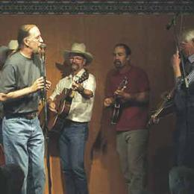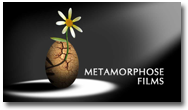JH Hootenanny: 700 times a charm
Wednesday, November 26, 2008
By Aaron Davis
Jackson Hole, Wyo.-The Jackson Hole Hootenanny is approaching its 700th occurrence on Dec. 8, and the anniversary is further sweetened as the Hoot hits the movie screen. A new music documentary two-and-a-half years in the making, Hoot in the Hole, tells the story of the acoustic, folk-based open stage that was co-founded in 1993 by Bill Briggs and Dick Barker. The DVD was released online just last week. Local retailers will soon be announced.
Hoot in the Hole features snippets of 48 performances by devout regulars as well as traveling musicians during the first 600 Hoots. Performances are intermingled with candid interviews from Briggs, Barker, and longtime attendees of the Hoot — John Kuzloski, John Cooke, Anne and Pete Sibley and others. High-definition cameras were used to shoot all of the interviews and stage performances during three different Hoots in 2006.
“The story really molded itself,” said filmmaker Juliet Sonnenberg of Atlanta, who used to work at Dornan’s and performed at the Hoot before entering the filmmaking world. “The most difficult part was choosing from so many great performances and in tandem, what parts of songs would have to be cut.”
Some of the best live footage is from Barker’s modest camcorder, routinely positioned in front of the stage each week since the early 90s. The sheer consistency of this fly-on-the-wall dedication for more than 10 years captured special moments that can sometimes get lost during a planned filming. But to dig up these moments took a good bit of groundwork.
“I had to choose from about 13 years worth of tapes [from Barker’s camera], so you can do the math,” Sonnenberg said of the hours and hours of footage to sort through. “Dick helped. He went through the preliminaries and pulled out close to 60 tapes. The idea was to use as many traditional and old-time songs as possible, along with the strongest performances.”
Some of those strong performances include the great storytelling tunes of Tom Rush during the time he was living in Moose, as well as other greats like Ramblin’ Jack Elliot, Chuck Pyle, The Hotclub of Cowtown, and The Wilders.
Attendees of the Hoot over the years will find it particularly interesting to see the regular characters in action—Anne and Pete Sibley honing their skill before going full-time professional, Tucker Smith of Steam Powered Airplane jamming fiddle tunes, the bluegrass of Buffalo Grass, cowboy music with Greg Keckler, and without further ado … the yodeling of Briggs and balladeer stylings of Barker. The film closes with a classic group jam with around ten regulars pickin’ and grinnin’ to the traditional tune “Crawdad Song.”
The overall vibe of the Hoot is well interpreted through the camera lenses. Briggs was a big part of it, explaining the “Teton Tea Parties” of the 1950s that ensued underneath the Snake River Bridge in Moose, eventually inspiring the Hoot. Kuzloski and the Sibleys convey the idea of community through acoustic group-oriented gatherings and the importance of a focused concert setting.
The balance of live music to talking heads finds a happy medium, with the opportunity to get to know a few of the regulars. Greg Keckler is one such personality highlighted, with a camera following him around his ranch before cutting to his live performance.
The film was an official selection to three film festivals including the Appalachian Film Fest and the Vail Film Fest. It also earned high marks for Excellence in a Music Documentary at the Park City Music Film Fest.






